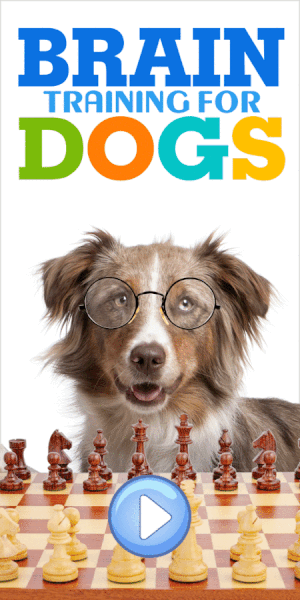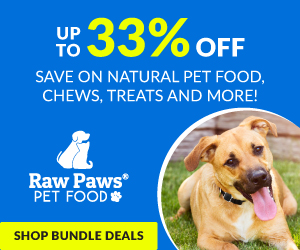Training
5 Easy Steps to Help a Dog with Separation Anxiety
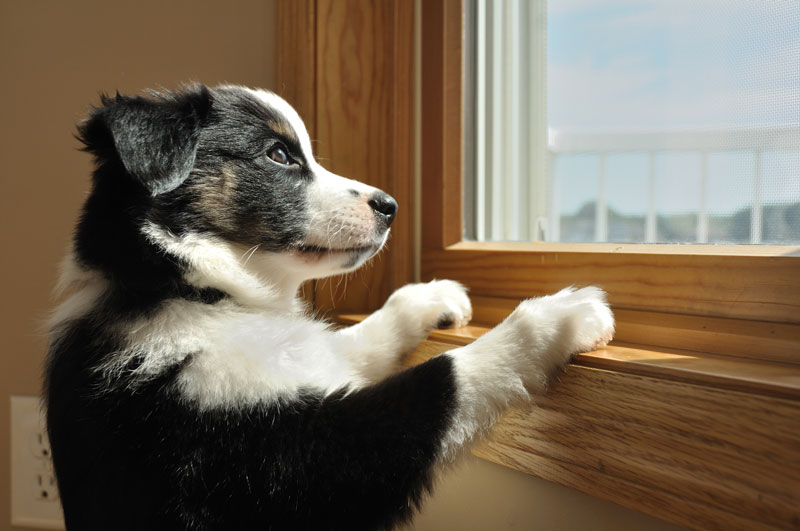
When you left the house for that dinner date, you told your puppy goodbye and that you’d be back soon.
You left with such a smile on your face.
That smile quickly disappeared once you walked back through the front door and saw your underwear massacred, your furniture chewed and broken, and a crying, panicking dog rushing to your feet.
He was so happy right before you left. So, what lead Fido to go into a frenzied panic?
Separation Anxiety is a difficult, frustrating, and scary thing for a dog owner to go through, especially if they’ve never experienced it before. I can guarantee you that it is much, much scarier for your dog.
Separation anxiety is a scary diagnosis, but don’t panic. It is a common occurrence in our canine friends and can easily be treated at home with a little love and patience.
Common signs of separation anxiety include:
- defecating or urinating excessively
- chewing and scratching
- barking
- panicked crying or screaming
Notice
If your dog’s separation behaviors persist after trying these methods and he attempts to or succeeds in harming himself, seek the help of a vet and behavior therapist immediately.
1. Keep Hello and Goodbye Calm and Simple
Dogs are smart and catch on to our habits quickly. Putting on makeup, jingling our keys, and putting on our shoes are common habits that alert our dogs to our departure.
To ensure that your pup doesn’t get worked up before you leave, cut all baby talk, long goodbyes, and any coddling. When a dog receives excessive attention or coddling before his owner leaves, it is only promoting the emotion he currently feels, which in this case, is anxiety.
When leaving home, a simple goodbye or a pat on the head is fine, then leave.
When arriving home, a hello and a pat on the head, then go about your business.
With repetition this will not only teach the dog that excessive worry is not necessary, but it will also condition him to understand that you will always come back to him. All he needs to do is wait and be comfortable in his alone time.
2. Do “Coming Home” Exercises
Another way to condition your dog to accepting your departure is to do departure exercises.
Put on your shoes, makeup, grab your keys, whatever is routine to you in leaving your home. As your dog follows you to the door, do not acknowledge him. If you absolutely must, you may say a calm goodbye, but leave immediately after.
When your dog begins to howl and whine or scratch at the door, which he will in the beginning, be patient. Enter the home again in a calm manner.
Do this several times for only five second increments. As you progress in this exercise, slowly increase the time the door is closed between the two of you.
If the separation problems are in the crate, apply the same method with the crate door. Either turn around or leave the room until your dog understands that you will return. He simply has to wait!
3. Supply Your Dog With Entertaining Toys
If you own a dog, you’ve heard of the famous Kong behavioral toy at some point.
Kongs are fantastic at distracting food motivated dogs. Fill it up with his favorite treat and let him lick away. Even if it is only a temporary fix, it will allow your dog to focus on something other than you leaving.
Kong Wobbler
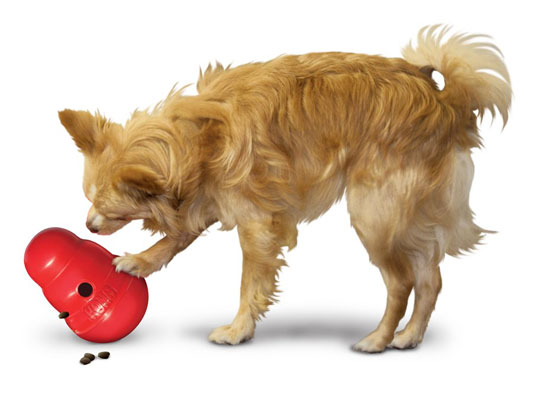
The Kong toy is great for anxious dogs because it hooks their attention and keeps them busy.
Doggy puzzles are also fantastic toys for dogs who become anxious due to boredom.
Snuffle mats, treat puzzles, and treat balls (similar to Kongs, as the dogs must use intelligence to knock the treats inside loose) are all popular options to keeping a smart dog busy. I’ll link them below if you want to check them out.
Snuffle Mat
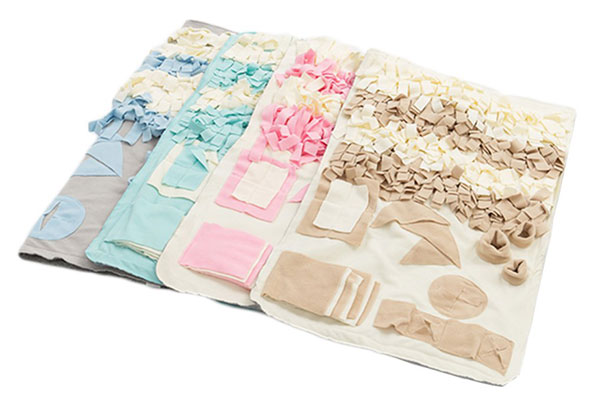
Dog snuffle mat puts your dog’s nose and brain to work by mimicking the hunt for food in nature.
Outward Hound Dog Puzzle
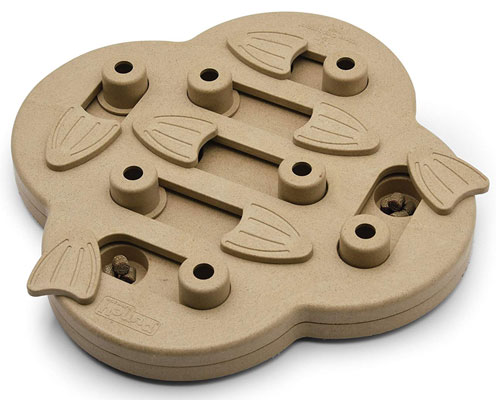
The interactive Hide N Slide dog puzzle toy is an entertaining and engaging dog treat dispenser toy that will exercise your dog’s mind.
Treat Ball Puzzle
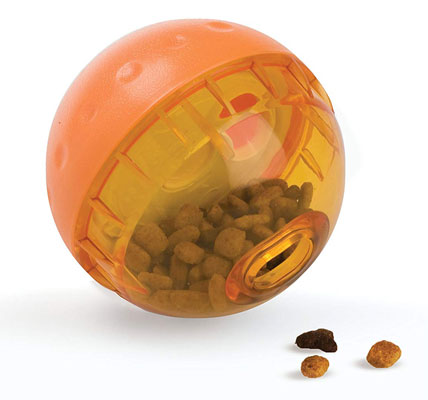
As your dog plays and the rolls the ball, treats will fall out to reward them for being active.
More intelligent dogs are more prone to anxiety due to their active minds that need to be challenged. These dogs require just as much mental exercise as physical exercise daily.
4. Get Him A Friend
Now, I’m not saying get another dog. Unless you have the money and time to support another pet, I do not recommend supplementing yourself with another dog to calm your first pet.
This is a great option for dogs who are alone for long hours at a time, but only if the circumstances allow for a healthy relationship between the two animals and that they are both properly cared for.
When another dog isn’t an option: there’s still hope!
The Snuggle Puppy is a great little tool that serves as a toy and a friend. Dogs all have an innate attraction to the scent and heartbeat of their mother and littermates.
These factors help in calming hormone production in your pup. If you can get the scent of the dog’s mother or littermates on The Snuggle Puppy, he will have a familiar-smelling friend he can cuddle up to when you are gone.
Snuggle Puppy
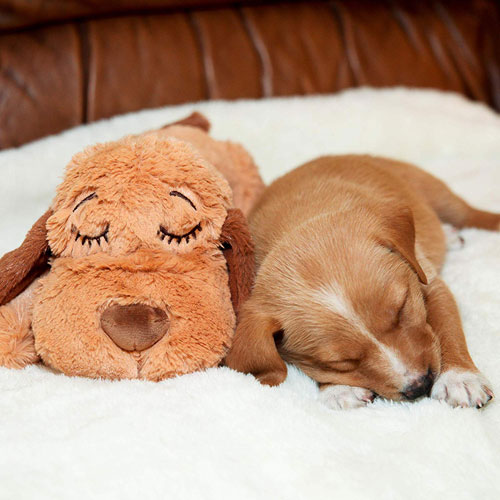
This comforting toy recreates the intimacy and physical warmth that your nervous pup craves in times of stress due to loneliness, fear and separation anxieties.
The Snuggle Puppy also comes with an air-activated heating pad and a battery-powered heartbeat that simulate the feeling of lying next to another warm, sleepy puppy. It is a great option for pet parents who have anxious dogs and puppies who need a little comfort when they are gone or for pups struggling at bed time.
5. Utilize His Best Feature: His Nose
A dog’s nose is his bread and butter. It takes him everywhere and it is how he interprets the world around him. Proper and safe aromatherapy can work wonders for your dog’s anxiety.
Essential oils work for our dogs in the same way they work for us. Slightly diluted lavender oil can calm dogs just as it does humans.
Ways to apply aromatherapy include rubbing diluted, pet safe oils behind the ears, rubbing the oils between your hands and rubbing it into your pet’s fur, and diffusing it in an oil diffuser. It is not recommended to apply oral essential oils unless under direct supervision from a veterinarian.
When not in use, be sure to keep all oils away from your pets.
Unsafe Essential Oils Include:
- Anise
- Birch
- Camphor
- Cassia
- Clove
- Horseradish
- Hyssop
- Juniper wood
- Mustard
- Oregano
- Pennyroyal
- Rue
- Tansy
- White Thyme
- Wintergreen
- Wormwood
- Yarrow
Check out our article Essential Oils for Dogs: The Best and How to Use Them if you are looking to go the essential oil route.
Final Thoughts
If you have tried the above methods and are still struggling with separation anxiety, consult your vet and a behavior therapist to discuss professional training and possibly medication to calm your fur baby.
If you give your dog love, time, and patience, the pay off in the end will be a happy, healthy, stress free dog.
Share with us some of your techniques to sooth a dog with separation anxiety in the comments below.
- Topics:
- Training

